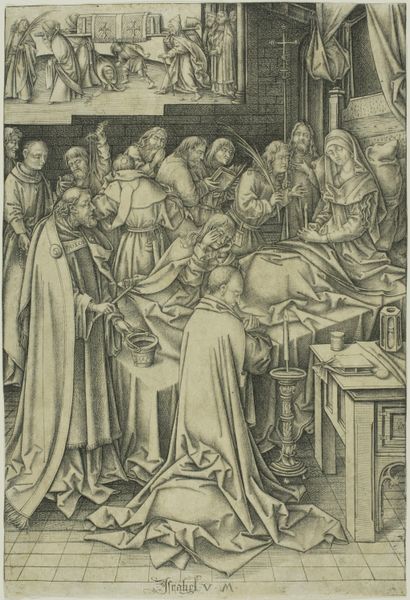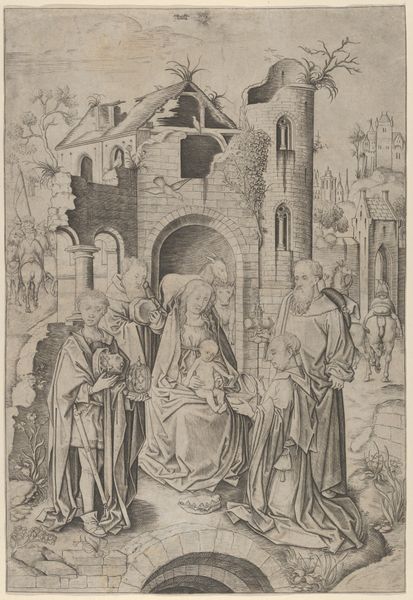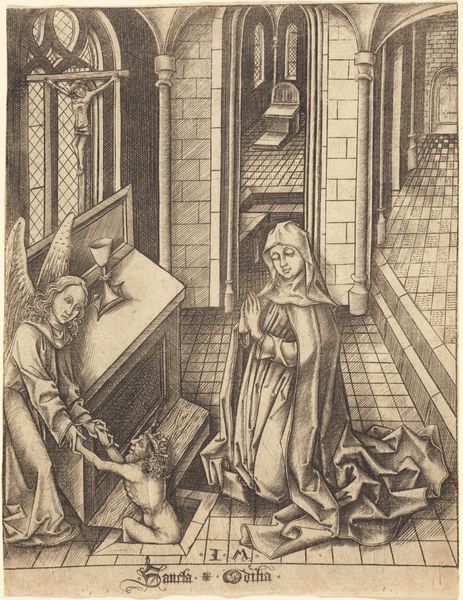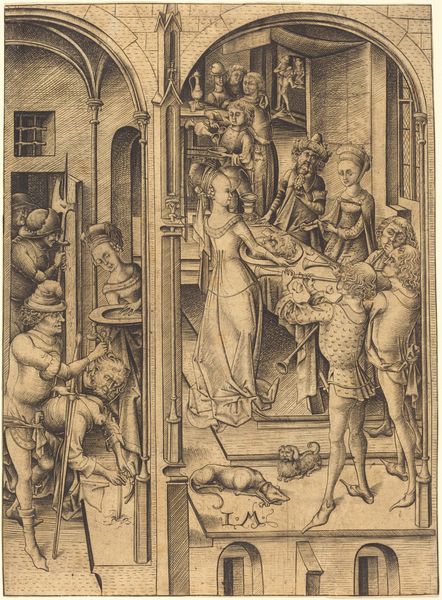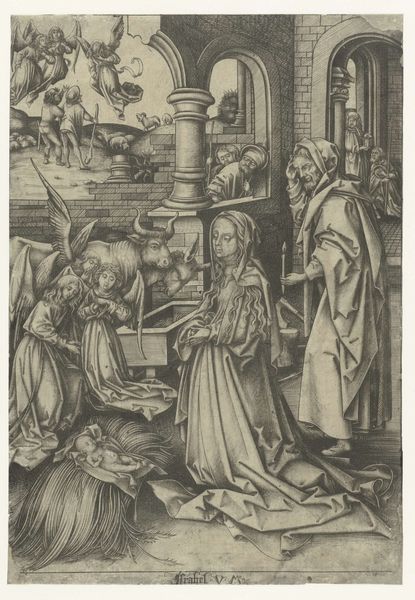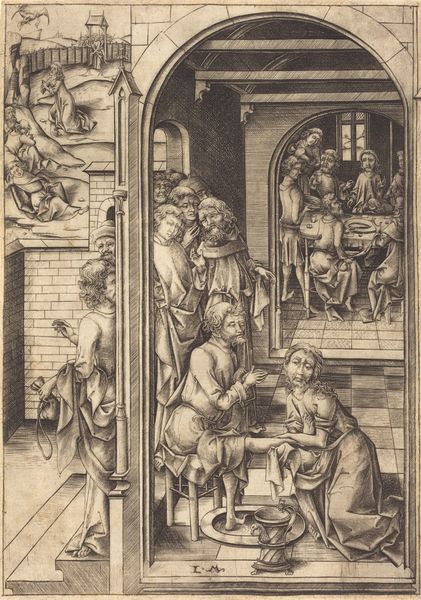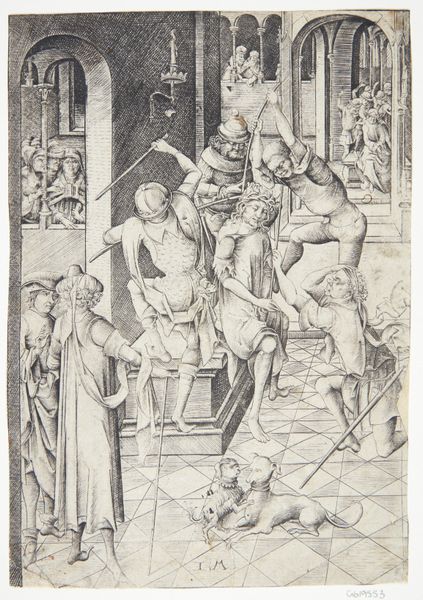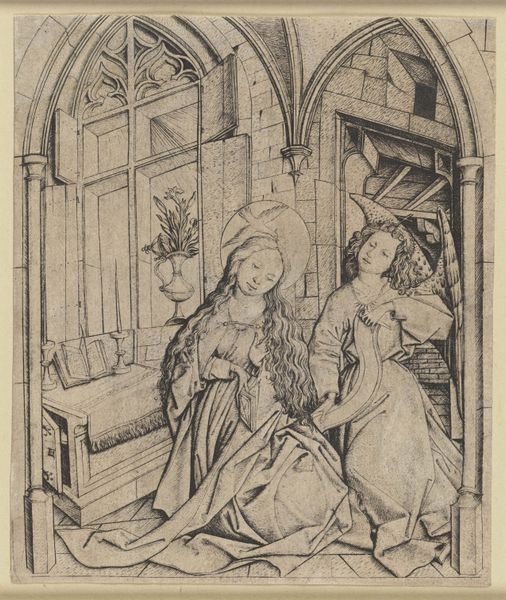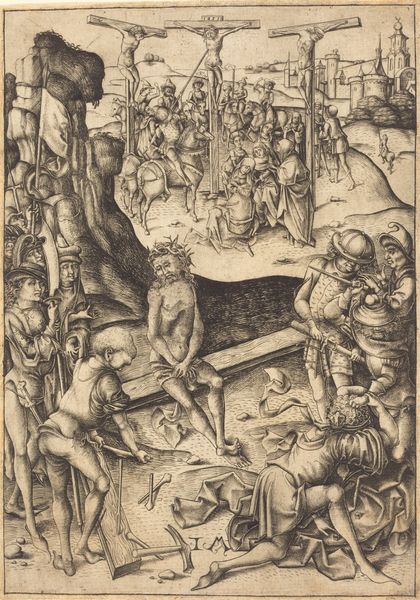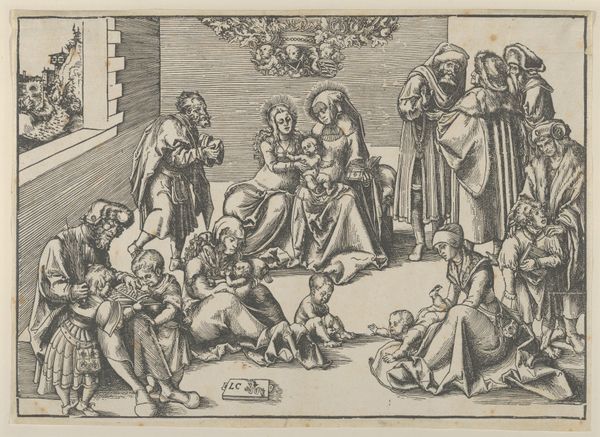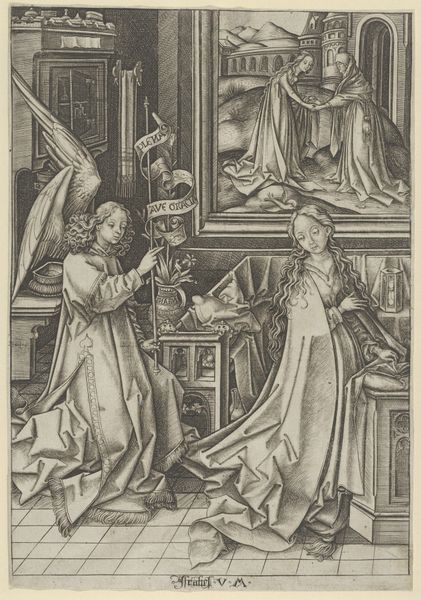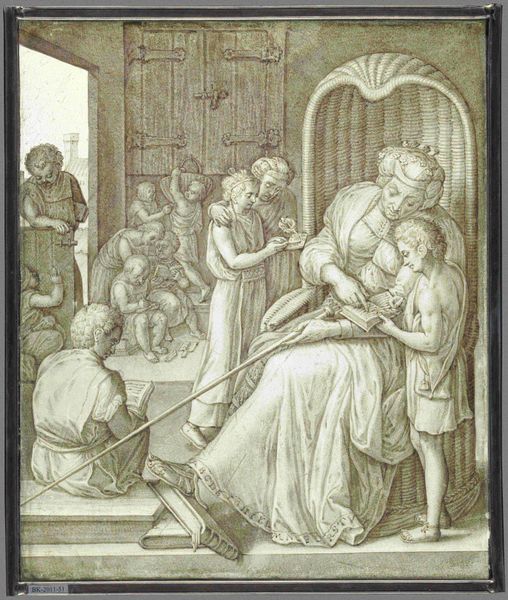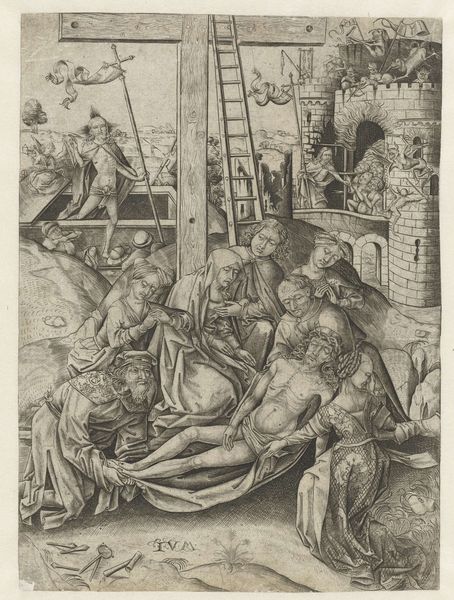
panel, oil-paint
#
panel
#
narrative-art
#
oil-paint
#
landscape
#
figuration
#
oil painting
#
northern-renaissance
Dimensions: 28 x 22 1/4in. (71.1 x 56.5cm)
Copyright: Public Domain
Editor: We're looking at "The Adoration of the Magi" by Hieronymus Bosch, dating from around 1470 to 1480, painted in oil on panel. I'm immediately struck by how theatrical the setting is, almost like a stage. What sense do you make of Bosch's depiction here? Curator: It's fascinating, isn't it? Consider the role of religious imagery in the 15th century. Bosch, working in the Northern Renaissance, creates this scene not just as a devotional object, but as a potent representation of power dynamics. Note the magi, stand-ins for earthly rulers, presenting their gifts. Their wealth acknowledges a higher authority. Editor: So the act of adoration itself is significant? Curator: Precisely. It’s a political statement rendered through a religious narrative. Notice the unusual architectural setting - it suggests a ruined world, hinting at the arrival of a new spiritual and, consequently, social order. Who is actually peering through the dilapidated ruins behind them? The presentation almost critiques its social relevance for that time. What do you observe of those individuals? Editor: I see what appears to be figures amongst the decaying castle-like setting in the background. It has become much more profound to what seemed superficially to be simply, just a landscape painting. Curator: That's correct. So what new questions do we then ask ourselves? Editor: How much did this depiction reflect a genuine shift in power dynamics of the period? Curator: That's key, considering Bosch's audience and patrons, and asking to what extent this imagery upheld or challenged those hierarchies. It reveals how art acted as a cultural mirror but also as a tool for social negotiation. It has been such an enlightening review!
Comments
No comments
Be the first to comment and join the conversation on the ultimate creative platform.
